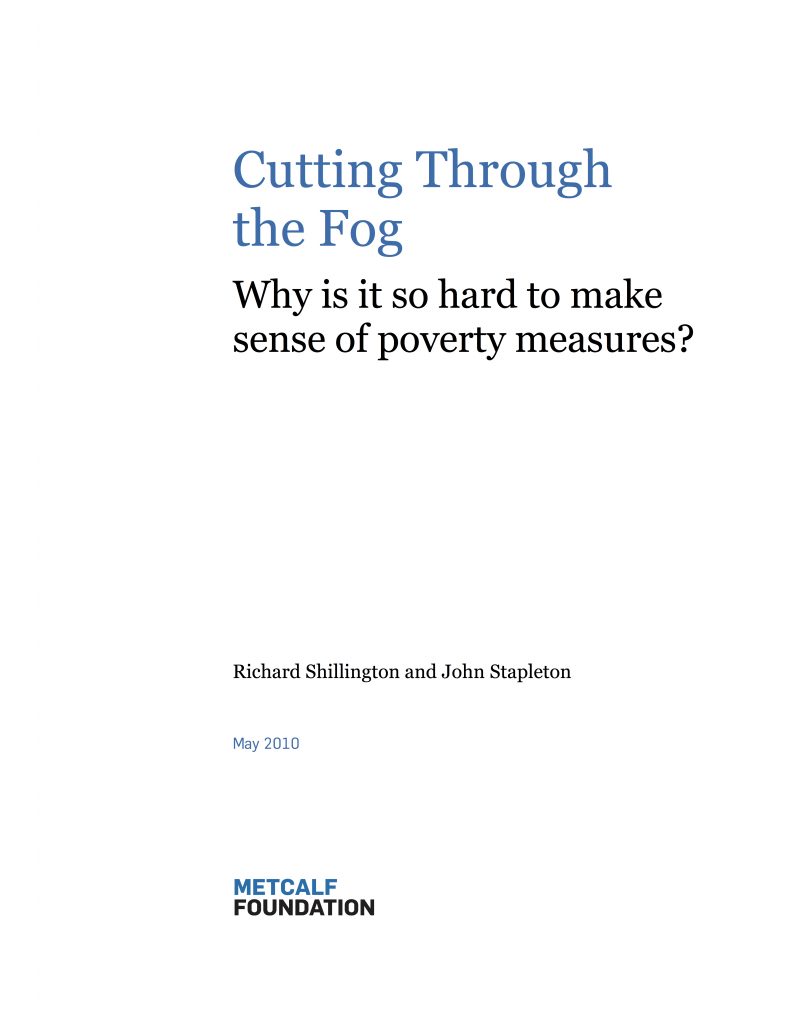Cutting Through the Fog: Why is it so hard to make sense of poverty measures? is about the challenges facing citizens when presented with statistics on poverty. It emphasizes the need to question the implications and assumptions underlying various poverty measures. The authors look at how we measure poverty levels, the working poor, child benefits, unemployment, and Employment Insurance. They provide some basic information about what measures are used and illustrate how different approaches to the data can colour social realities. As Stapleton and Shillington write, “… if we don’t make sense of poverty measures, we will limit our ability as a society to make good decisions about poverty and related issues.”
Below are the working papers by Richard Shillington, Michelle Lasota, and Laura Shantz which provided the basis for this paper.
- Working Paper 1: The Meaning of Poverty
- Working Paper 2: Existing Measures
- Working Paper 3: Data, Language, and Policy
- Working Paper 4: Comparing Poverty Measures
- Working Paper 4: Chart
- Working Paper 5: Measurement of Poverty Within Family Groups
- Working Paper 6: Academia to Application
- Working Paper 7: Treatment of In-Kind Benefits
- Working Paper 8: Shelter and Poverty Measurement
- Working Paper 9: Resources
- Working Paper 10: Connecting Poverty Measurement to Policy


